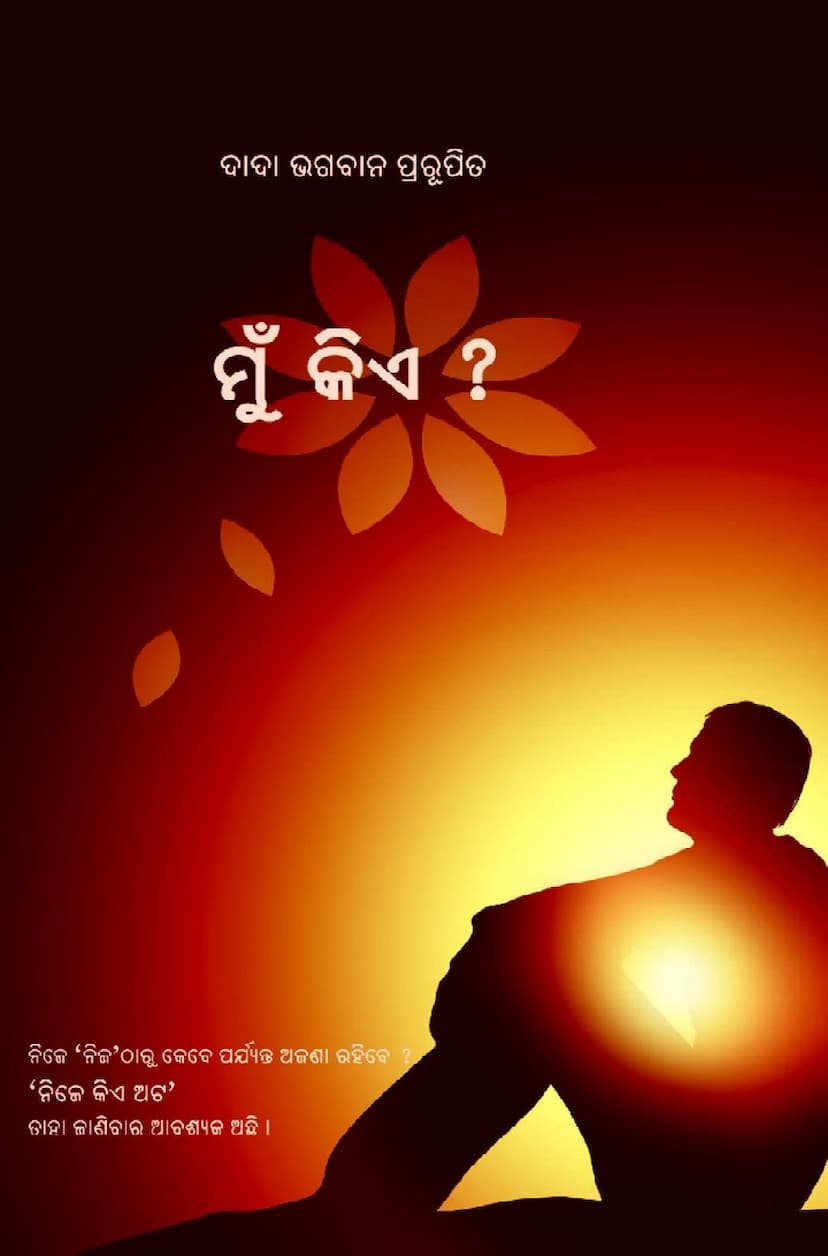Who Am I
Added to library: September 2, 2025

Summary
Here's a comprehensive summary of the Jain text "Who Am I" by Dada Bhagwan, based on the provided pages:
Core Message:
The central theme of "Who Am I" revolves around the fundamental question of self-identity. Dada Bhagwan, through this text, aims to guide seekers towards realizing their true nature, the Self (the Soul), distinct from their name, body, and worldly possessions. The book emphasizes that true happiness and liberation lie in understanding "Who am I?" and detaching from the ego-driven identification with the "mine" aspect.
Key Concepts and Teachings:
-
The Question of Identity: The book begins by highlighting the essential need to know "Who am I?" It posits that individuals remain unknown to themselves for an immeasurable time, leading to suffering and a lack of fulfillment.
-
Dada Bhagwan's Revelation and the Akram Marg:
- The text introduces Dada Bhagwan (formerly Ambalal Purushottam Patel) as the proponent of the "Akram Marg" (the Effortless Path).
- He experienced a profound spiritual awakening in 1958, where the entire universe and the secrets of life were revealed to him.
- He developed a method, the Akram Marg, which is described as a "lift" or "shortcut" to self-realization, enabling people to attain Self-knowledge and liberation within a short period.
- From 1962 to 1988, Dada Bhagwan initiated thousands into this path, guiding them towards liberation while they remained engaged in their worldly lives.
-
Distinguishing "I" from "Mine":
- A significant portion of the book focuses on differentiating the true Self ("I") from possessions and identifications ("Mine").
- Through dialogues and examples, Dada Bhagwan illustrates how we mistakenly identify with our names, professions, relationships, and even our bodies.
- The concept of "right belief" versus "wrong belief" is introduced, emphasizing that our ingrained beliefs about ourselves are often incorrect and the root cause of our suffering.
- The text encourages the practice of separating "I" from "Mine," akin to separating cream from milk, to understand the true nature of the Self.
-
The Nature of the Self (Soul):
- The Self is described as eternal and unchanging, distinct from the temporary nature of the body and worldly relationships.
- The author clarifies that the physical body is not God; God is the eternal, omnipresent Soul residing within all beings.
-
The Role of the Gnani Purush (Self-Realized Soul):
- The book stresses the importance of meeting a Gnani Purush (a fully self-realized being) to attain Self-knowledge.
- Just as a lit lamp can ignite another, only a Gnani Purush can impart the knowledge of the Self.
- The characteristics of a Gnani Purush are described as someone free from ego and possessiveness, whose very presence and words are purifying and guiding.
- The difference between a saint (who guides towards good deeds) and a Gnani Purush (who liberates from all karma) is highlighted.
-
The Akram Path vs. The Kramik Path:
- The Akram Marg is contrasted with the traditional Kramik Marg (the gradual path), which involves a long and arduous journey of spiritual practice over many lifetimes.
- Akram is presented as a direct and swift method, like taking an elevator, bypassing the need for extensive asceticism or rituals.
-
The Nature of the Universe and Karma:
- The universe is not created by God in a conventional sense but is a manifestation of "organized energy" or "scientific circumstantial evidence."
- Karma is explained as a consequence of our actions and beliefs, and the cycle of birth and death is perpetuated by our false identifications.
- The teachings suggest that the core of karma is the belief in being the doer. By realizing the Self, the concept of being the doer dissolves, leading to freedom from karma.
-
Liberation (Moksha):
- Moksha is not a distant place but a state of being, characterized by the absence of worldly suffering and the constant experience of the Self.
- True liberation is attainable in this very lifetime, even while living a worldly life, through the Akram Marg.
- The path to Moksha involves understanding the Self, following the guidance of the Gnani Purush, and adhering to the five given 'commands' or principles that protect one's spiritual progress.
-
The Significance of Dada Bhagwan and Simandhar Swami:
- Dada Bhagwan clarifies that he is not God himself but a vessel through whom the divine knowledge is being conveyed. The ultimate God being referred to is the inner, realized Self, referred to as "Dada Bhagwan" within.
- The book also emphasizes the importance of devotion to Lord Simandhar Swami, the current Tirthankar in the Mahavideh region, as a means to attain the grace of the Self.
-
The Importance of Achieved Knowledge and Practical Application:
- The text stresses that mere intellectual understanding is insufficient; true realization comes from practical application and living according to the teachings.
- The "Five Commands" are presented as essential guidelines for maintaining spiritual awareness and preventing the loss of Self-knowledge.
- The concept of "pratikraman" (self-purification through confession and repentance) is alluded to as a way to rectify mistakes.
Overall:
"Who Am I" is a profound spiritual discourse that aims to dismantle the reader's false identifications and lead them to the direct experience of the Soul. Dada Bhagwan's teachings, presented in a simple and accessible manner, offer a revolutionary path to liberation that is both practical and attainable in the present life, even amidst worldly responsibilities. The book serves as a guide for seekers to understand their true nature and achieve lasting peace and bliss.